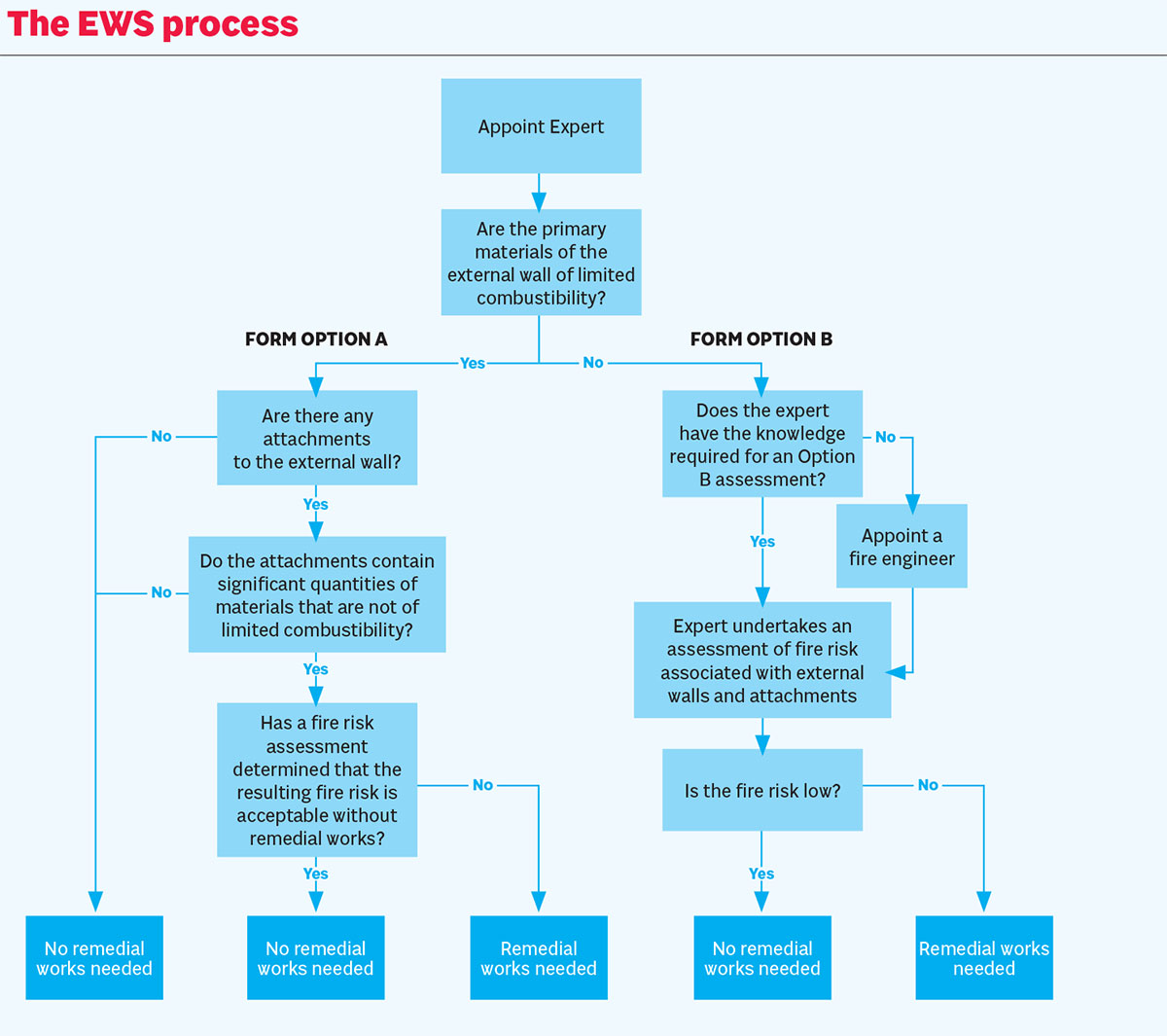Thank you for attending our “Scottish Cladding Crisis Seminar” held on March 18th. We hope you found the session helpful and informative. During the event, we covered specific issues concerning the current Cladding Crisis including EWS1 forms, the impact of Grenfell Tower as well as advice on selling and buying properties with cladding in Scotland.
There were more than 200 attendees that included Estate Agents, Conveyancing Lawyers, and buyers and sellers affected by cladding in Scotland and England.
For those who missed the event, full recording and presentation slides are available on our YouTube Channel.
Impact of the Grenfell Tower Fire
The tragic 2017 Grenfell Tower fire increased the concern over the use of combustible materials and the risks that they posed to residents in buildings over 18 metres. It has been noted that the problem is not simply the ACM cladding but potentially the entire external wall system. This problem is currently affecting thousands of Scottish residents.
Many homeowners were slow to react because guidelines initially stated that EWS1 forms were required for buildings 18m and above.
The Ministry of Housing Communities and Local Government advice was updated January 2020 that ACM is “a significant fire hazard”, HPL Class C&D “noticeable fire hazard” and that external additions such as balconies, which contain combustible materials can be a “source of rapid-fire spread”. Most importantly that materials on buildings can still be dangerous “irrespective of the height of the building”.
EWS1 Forms

In Scotland, the property holder must supply an EWS1 form (an external wall safety form) which will confirm whether combustible materials are present in the external system and, if so, whether repairs are necessary. It is a simple “tick box report” but an essential financial risk tool necessary for mortgage lenders.
The EWS1 Form gives a rating of A1, A2, A3, or B1. Receiving a satisfactory EWS1 form for a lender allows you to sell or remortgage your property. A B2 rating unfortunately means that you cannot sell your property until repairs have been made.
Costs vary depending on the specialist instructed and if the report is carried out for an individual or for the entire block
In Scotland, EWS1 fees start from £525+ VAT per property and go up to £3,500 + VAT per property.
Selling Your Property with Cladding

Watermans’ Head of Property, Tzana Webster, urges those affected by cladding to be proactive. If you are in a block of flats, group together and coordinate with other homeowners to start the research. Report issues to Residents Association and to your Factor as soon as possible.
Choose an agent experienced with cladding and one that isn’t afraid to talk about it. Specifically, ask the agent if they are actively involved and knowledgeable in the cladding situation and if they are training their teams about cladding.
When selling your home, you need to instruct a knowledgeable agent who will not only be able to provide homeowners with advice on pre-sales and marketing but also be confident when speaking with buyers to pass on information.
Arranging Mortgages with Cladding
Lenders will always be led by the Chartered Surveyor, so it is best to get your EWS1 form completed as early as possible when buying, selling, or remortgaging. The lenders are driving the conversation and the requirements with buyers who require a mortgage. Freehold vs Leasehold: In Scotland. Because of freehold, each property owner needs to obtain their own individual EWS1 form. There are discussions with RICS and UK Finance about trying to arrange for the buildings or property manager to get just 1 report for a building in Scotland, but this has not yet been agreed upon, and as it stands currently, each owner must get their own form.
Buying a Property with Cladding
Many solicitors acting for interesting buyers want to review the EWS1 Form for a property that is advertised for sale at the outset, when their client expresses interest, so they can flag up any potential issues to their client as soon as possible. E.g. Form ratings.

Head of Conveyancing at Watermans Legal, Shawn Wood advises to be prepared, have the EWS1 Form available from the start to ensure there are no delays within the transaction.
Shawn’s Tips on Buying a Property with Cladding or an EWS1 Form:
- View your properties, when possible.
- Ask about cladding and EWS1 forms
- Do your research and contact your Mortgage Lender
- Act fast, contact solicitor to submit an offer
- Take advantage of First Home Fund and Lift schemes to help you towards your first purchase.
Cladding Crisis Questions & Answers
Has the Cladding Crisis affected sale prices negatively?
Those with EWS1 forms are achieving successful sales in Scotland and are achieving strong prices from their sale. Watermans want to mute the clickbait on “unsellable” “unmortgageable” homes.
100% Homeowners Approval or Majority?
Check your title deeds, Factors and Residents Association to see what they specifically say. Usually, decisions about improvements require a unanimous decision. Again, unless your title deeds have set out voting terms for building improvements.
What can your Mortgage Advisor to help property buyers and homeowners remortgaging?
- As soon as you find a property that you’re interested in and know it has cladding, speak with the selling agent and request a copy of the EWS1 Form. (Be sure to check the back of the Home Report Survey, as many sellers have these uploaded on the back of the document) Then speak to your Mortgage Advisor and solicitor to make them aware that you’re looking at this type of property,
- Check with the lender that the qualifications of the specialist who prepared the EWS1 form are suitable with the lender before submitting the mortgage application
- If you want to raise money for home improvements or for a deposit to buy another property, product options would be restricted to additional lending through your existing mortgage provider at potentially higher interest rates, when the overall cost of remortgage elsewhere could be cheaper.
Will I still need an EWS1 Form when the new RICS Guidance comes out?
If the lenders are still demanding EWS1 Forms for properties, despite the new guidance, for property owners to sell or remortgage, the EWS1 form will be required. It is best to stay flexible.
Can a homeowner challenge the need for an EWS1 Form if it’s stated in the Home Report Survey or Valuation Report?
Scottish guidelines state that an EWS1 form is required. Alternatives are currently still being debated.
Is there a central portal or information centre that homeowners can check a building’s status regarding EWS1 Forms, or are the buildings assessed on a case-by-case scenario?
Most surveying firms will have their own portal for blocks and their ratings. However, there is no central portal.
Is an EWS1 form required for new build properties?
A new build should not need an EWS1 form due to a change in regulation which states that no combustible materials should be used in building the property.
Although there is no Home Report that immediately identifies an issue, it cannot be taken for granted that there isn’t an issue.
Why won’t many surveyors comment on the EWS1 form?
RICS Guidance states that surveyors are not supposed to comment on the form but as A1s, A2s, and B1s are what the lenders are lending on. The lender will send surveyors a pdq which accepts the rating.
Why is a chartered engineer required for a B1 or B2 rating?
The decision was made by the Institution of Fire Engineers. A B rating indicates that there are combustibles in the external walls. They felt that these qualified chartered engineers were the most qualified to give their opinion on the rating.
Is the EWS1 form encouraged by the law society to be extended over to the purchasers and/or their lenders. Who pays for that?
The solicitors will act in the best interest of their clients. Some see the advantages of the form being in the buyer’s name as it will be the buyer who owns the property. They will need that EWS1 form in order to apply for any fixed rate mortgage deals or home improvement loans. Especially if they sold the property within that five-year term. This is an idealistic view. However, for insurers, they will not provide that cover to a third party. So, a second EWS1 form would need to be commissioned.
We would like to thank Tzana Webster, Shawn Wood, Mike Horne, Paul Nelis, and Mark Wallace for taking the time to speak with us and for their participation in such an informative seminar. Read a summary of the Scottish Cladding Crisis Seminar.
You can find all our speaker’s details on our Cladding page. If you are considering selling or buying a new property or would like any advice on Cladding in Scotland, contact our Estate Agency Team: 0131 467 5566 [email protected].